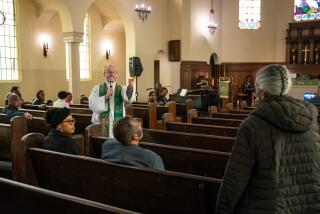‘It doesn’t really feel like Easter.’ For black churches, coronavirus changed everything
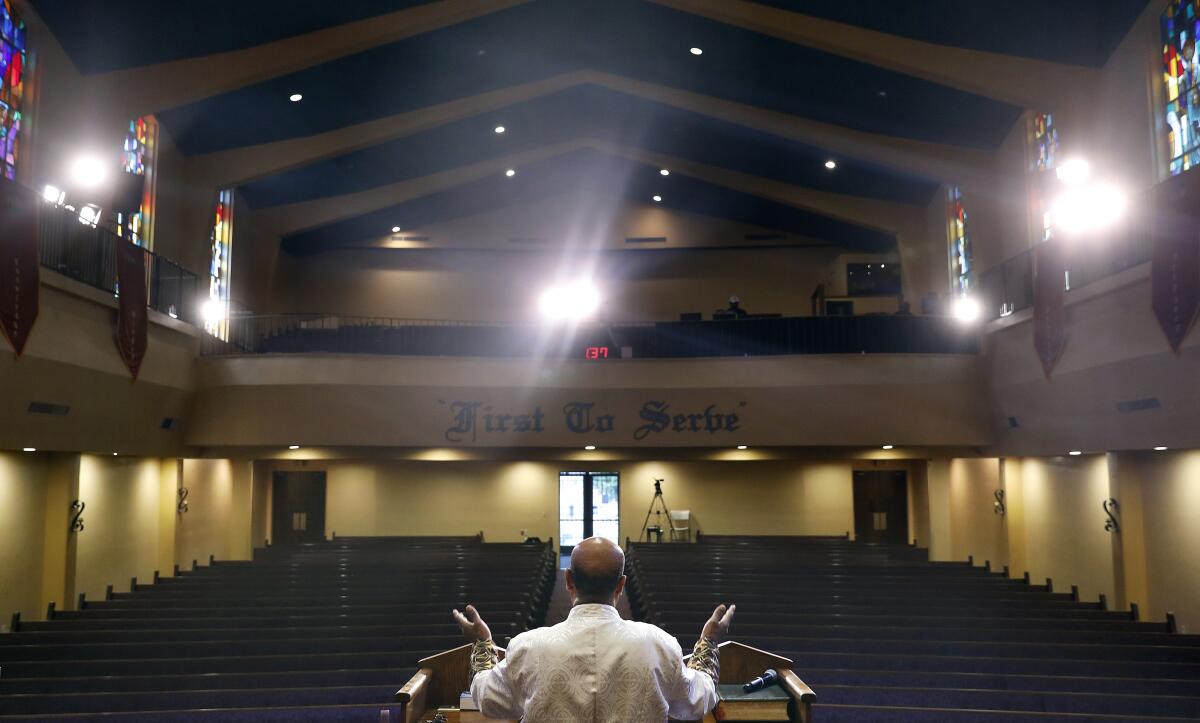
- Share via
In times of crisis, First African Methodist Episcopal Church in South Los Angeles is known for springing into action — a reflex embodied in its motto, “First to Serve.”
It provided shelter during the 1992 riots. It offered healing after the 9/11 terrorist attacks. And for decades, it has filled in gaps in the social safety net when government has been absent or slow to respond.
That’s one reason the coronavirus pandemic has so pained its pastor, J. Edgar Boyd. Even as reports have shown that the deadly virus is hitting black Americans with a particular vengeance, he has had to close the doors to his church — the oldest black church in Los Angeles — in the midst of the biggest crisis of the past century. And he had to do it for Easter Sunday.
“It’s emotional and a spiritual struggle,” Boyd said.
When Boyd first heard that the virus was creeping into communities, he said he wanted to jump into action — gather his flock, lay hands on the sick, and wrap the worried in a holy hug. But with orders to use social distancing to slow the pandemic, the act of physically coming together could be deadly.
For centuries, black churches have been the steady sail in turbulent times, a place where parishioners and community members alike know to come for refuge, information and to make sense of tragedy. But with this crisis, they have been forced to take quieter, less visible roles.
“We could hardly do nothing other than communicate,” Boyd said.
Dozens of faith leaders are holding regular conference calls with Mayor Eric Garcetti. They are recording public service announcements in empty churches, urging their members to stay home. And on their websites they are replacing links to Scripture with warning links from the Centers for Disease Control and Prevention and the World Health Organization.
“The black church has always done our community development, civic engagement, advocacy in this very visible space where they are on corners, in front of cameras and convening,” said the Rev. Najuma Smith-Pollard. “Right now, it might feel like black leadership is not present, but we are.”
::
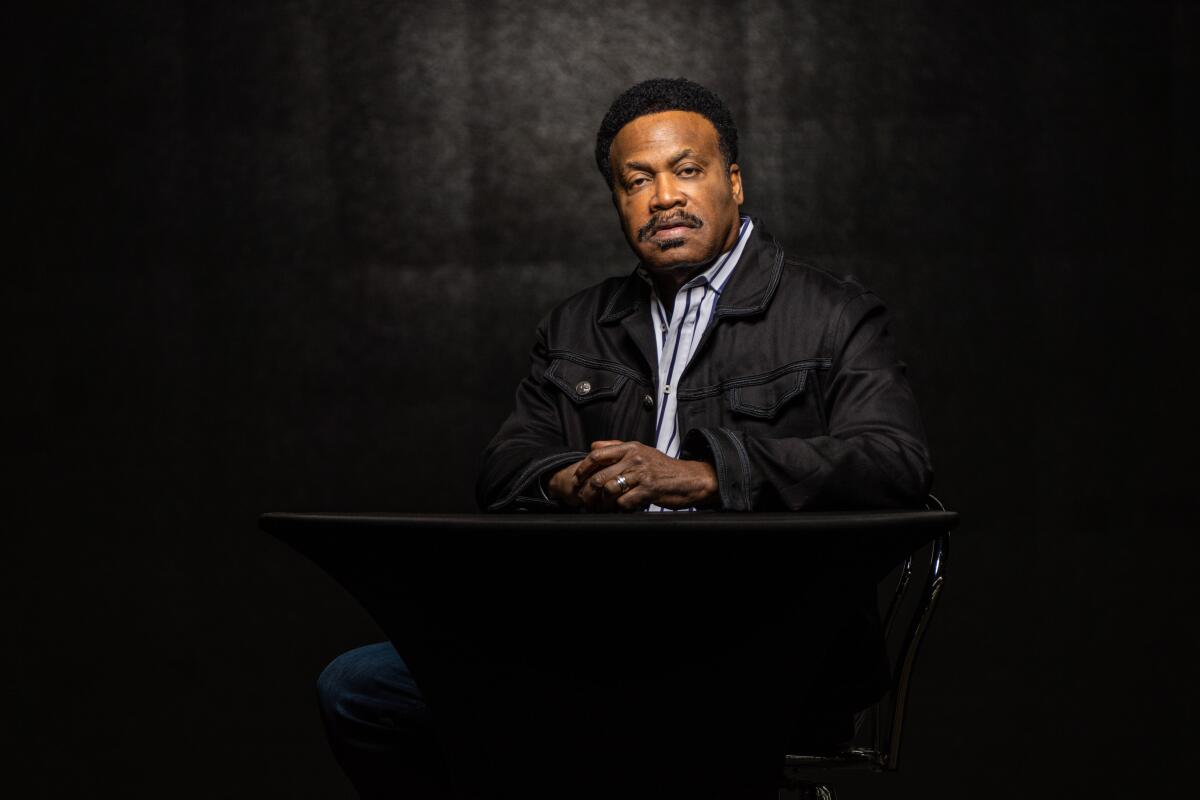
At no time has this separation brought about by social distancing been felt more deeply than during the Holy Week leading up to Easter. Almost every act, from a Good Friday fish fry to an Easter egg hunt to the pageantry of Sunday church service, requires togetherness.
Resurrection Sunday, as Easter is sometimes called, is a time a when boys get their first suit to wear to church and fathers or older brothers hold lessons on how to tie a tie.
For black girls, preparing for the day often involves a trip to the hair salon and a new puffy dress, with matching stockings and patent leather shoes. Women don their most elaborate hats. Men pull out their best suits.
“There’s a pride that emanates on that day, in my mind, that is unique,” longtime First A.M.E. member Kerman Maddox said.
There’s an unspoken rule in many black households that even if you don’t go to church most Sundays, attendance on Easter is mandatory, some pastors and parishioners say. This crowd of occasional churchgoers are sometimes called “CMEs,” as in Christmas, Mother’s Day and Easter.
As a child, JoLeta Simmons didn’t regularly attend church, but went on Easter. She keeps a photo of herself standing outside a church in a dress and frilly bonnet, Easter basket in hand.
Later in life she became a devoted churchgoer. Memories of Easter still stick with her.
“I would go to the beauty college and get a press and curl,” Simmons said Friday from her Compton home. The curling would be “sizzling and your hair was slick and curls were tight.”
Simmons said she was looking forward to continuing the tradition with her grandchildren and was in the process of getting custom-made dresses for herself and 3-year-old granddaughter. Then the coronavirus disrupted life.
“It doesn’t really feel like Easter,” she said. Normally, “the stores are crowded. The stores are crowded but not with the joy and excitement of Easter. It’s more panic and worry.”
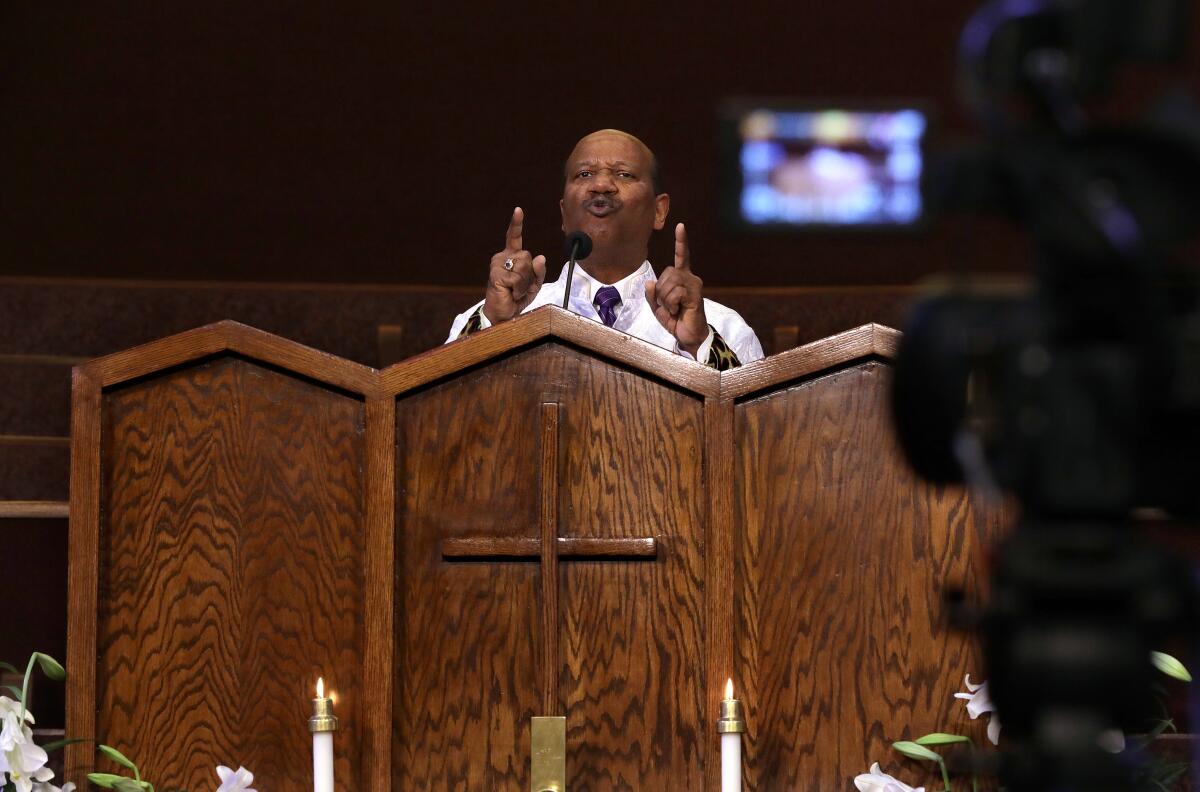
::
For pastors, the coronavirus has presented other challenges.
Easter Sundays, for example, tend to bring in more parishioners than any other holiday. Some churches can raise up to half of their annual budgets in that one day, said Bishop Kenneth Ulmer, head of Faithful Central Bible Church in Inglewood.
Ulmer and his congregation normally spend weeks, even months, preparing for Easter with a cast of 200 to 300 people, including singers and dancers. Last year, there was a full orchestra.
Years ago, when Faithful Central held service at the Forum, they brought in live animals and had an actor portray Jesus floating above the crowd.
This year, it’s just Ulmer and a seven-person camera crew.
The sermons, which he taped last week, are shorter now, without the “amens” from the pews. He said he was more conscious of his timing and the tilt of his head.
“When you’re dealing with cameras and lighting and all of that, you have to be very careful that it doesn’t become too glitz,” Ulmer said. “We don’t want people to feel like they are observing a show instead of participating in a worship.”
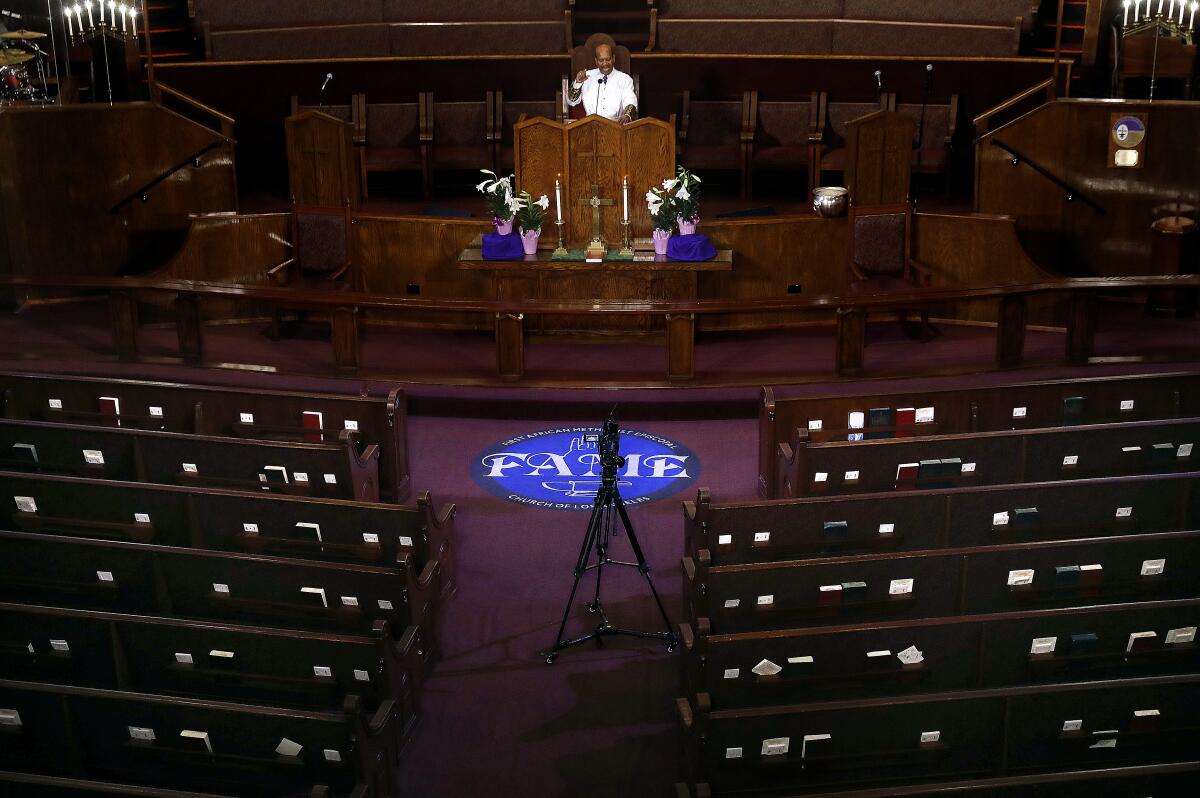
The very act of praise and worship, often a call-and-response between a pastor and parishioners, is different when parishioners have to type “amen” in the comments of a livestreamed service or shout “Hallelujah!” alone at home.
“It’s the music, it’s the people, it’s the Word that moves you,” said Timothy Butler, 38, of North Hollywood. “It’s hard to tap in when you don’t have another person there to give you encouragement to praise without restraint.”
But not all the changes have been bad for pastors. Last Sunday, Ulmer said about 10,000 people streamed his service online — twice the number he normally draws on Easter.
“Several people said this was the first time their families had ever worshiped together,” he said. “It has been kind of exciting, but it’s a great challenge.”
Simmons said she will be watching the Rev. Smith-Pollard of Word of Encouragement Church on her phone Sunday. What will certainly be a message of hope, renewal and rebirth is one we all can use right now, she said.
More to Read
Sign up for Essential California
The most important California stories and recommendations in your inbox every morning.
You may occasionally receive promotional content from the Los Angeles Times.
